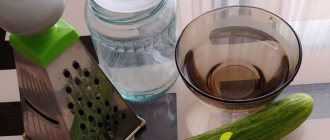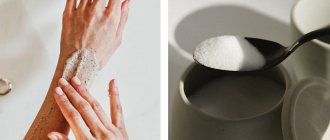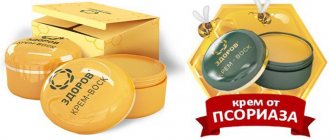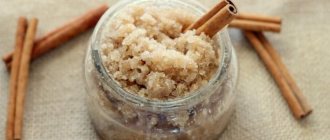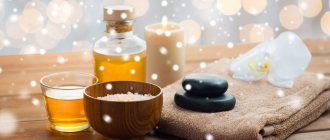The range of cosmetic products today is so diverse that every customer will be able to choose the most suitable anti-aging face cream for herself. However, purchased products cannot boast of the safety that creams prepared independently at home have.
They are enriched with nourishing base and essential oils, beeswax, glycerin, and other components that promote effective skin rejuvenation. At the same time, homemade creams do not contain hazardous preservatives and parabens, which can only worsen the condition of the skin.
In this article, we have collected very simple, yet effective recipes for homemade anti-aging remedies that eliminate the first signs of aging. In addition to smoothing out wrinkles, such creams have the following benefits:
- perfectly nourish and moisturize the epidermis;
- improve complexion;
- relieve inflammation and irritation;
- help reduce pores;
- give the skin a matte finish.
For wrinkles with cognac
A fairly popular preparation method that demonstrates visible results of rejuvenation on aging skin after 40 years.
All you need is:
- 2 tsp dessert cognac;
- 1 chicken yolk;
- tbsp honey;
- 100 g heavy cream;
- a couple of drops of lemon juice.
To prepare a rejuvenating face cream, just combine all the above ingredients in a convenient container, then heat the resulting mixture using a water bath. The heated mass is kept on fire for 5-10 minutes until a thick cream consistency is obtained.
The finished composition is applied to cleansed facial skin, and after half an hour the remaining product is removed with warm water. For the best effect, it is recommended to first cleanse the face of the stratum corneum of the epithelium using a scrub or peeling.
This anti-aging cream with cognac helps get rid of both wrinkles in the forehead and crow's feet around the eyes.
Tools for making cream
The future cream maker needs to acquire a certain set of tools. The list is small, acquiring everything you need is easy and inexpensive. To make face cream at home, you will need the following items.
- Enameled cup. Definitely a large diameter. Can be replaced with a wide pan. These are dishes for a “water bath”.
Glass bowls. At least three. They are needed to mix and heat ingredients.- Spoon. Preferably porcelain. It will come in handy for stirring and arranging the products.
- Syringe. Volume 2-5 ml. Needed to maintain strict dosages of oils and other liquids.
- Whisk. Or a mixer for whipping. It’s convenient if you have a special mini-mixer.
- Thermometer for liquids. Needed to measure the heating temperature of substances and mixtures.
- Containers for ready-made creams. Glass and plastic jars with lids. You can take baby food containers.
It is necessary to take care of the availability of ingredients in advance. Some of them are sold in pharmacies. But not all. It is better to look for special components in specialized online stores. There are plenty of such sites today. After all, handmade cosmetics are in demand, and for girls, cream and soap making has become not only a hobby, but also a source of additional income.
Glycerin
This cream is intended for those with oily skin.
Compound:
- ½ tsp. camphor alcohol;
- 2 tsp lemon juice;
- 1 tsp honey;
- 1 tsp glycerin;
- 1 yolk;
- 2 tsp olive oils.
Honey is ground with egg yolk, and then olive oil is added to the mixture. The components are heated in a water bath, while constantly stirring the mixture with a whisk.
Next, slowly pour in the alcohol, add all the remaining products, without stopping the process of stirring the mixture. The cream is left on the face for 20 minutes, after which the residue is removed with water or a cotton pad.
Honey
You will need:
- crushed beeswax – 20 g;
- shea butter – 2 tsp;
- coconut and almond oil - 1 tbsp each;
- rose water – 1 tsp;
- honey – 2 tsp;
- a couple drops of ylang-ylang essential oil and liquid vitamin E.
At the initial stage of preparation, base oils and beeswax are heated in a water bath. Honey diluted with rose water is heated in a separate container.
Be careful not to overheat the mixture during heat treatment, otherwise the honey will lose all its beneficial substances.
Then combine the previously prepared oil mixture with the honey mass and mix the components thoroughly. The resulting consistency is removed from the heat, cooled for 15 minutes, after which liquid vitamin E and ylang-ylang essential oil are added to the cream. Honey anti-wrinkle cream is used twice a day: morning and evening.
Fat phase
This phase includes vegetable oils and an emulsifier. In my recipe we will use the emulsifier Olivem 1000 and vegetable oils: argan, broccoli, black cumin, shea. I tried to combine the oils in this recipe using German technology for combining oils.
If you have not heard anything about this or are preparing the cream for the first time, you can use one argan or sesame oil in the fatty phase. They will also make a good cream, since their fatty acid composition is balanced.
But it is better when the cream uses a mixture of oils, and correctly combined, taking into account the composition of all oils.
In this article I will not dwell on combining oils, but will focus on the moisturizing components of the cream.
Olive
This cream has a fairly rich, thick texture that is absorbed into the skin within 20 minutes. Therefore, we recommend using this recipe as night care for dry epidermis.
It is necessary to mix olive and coconut oil (2 tablespoons each) and heat the ingredients. Then add 1 tsp to the mixture. tocopherol and a few drops of lavender essential oil. To give the cream a lighter, airy texture, the heated mixture should be thoroughly beaten, then immediately cool the resulting consistency.
How it works
Aloe Vera Gel
This is one of the ingredients that has been used in many homemade facial moisturizer recipes. Aloe vera is known for its moisturizing and moisturizing properties. It has a lot of water content which helps in hydrating the skin. The best thing about using aloe vera is that it can be used on all skin types, including sensitive skin type because aloe vera is non-comedogenic. This wonderful plant offers several benefits to our skin. It has antioxidant properties that help protect our skin from free radicals such as dullness, dryness, premature aging, etc. It is very helpful in keeping the skin soft, supple and healthy with regular use.
Aloe vera has the ability to restore the skin's natural elasticity by enhancing collagen production. And it can also smooth out wrinkles and lines that appear as signs of premature aging. This plant is a repository of several special components such as "gibberellin", a growth hormone and "glucomannan", a polysaccharide. Both of them are extremely effective in treating dry, rough, dull skin. Aloe vera has anti-aging and anti-inflammatory properties that promote healthy, youthful skin.
Coconut oil
Here is another important ingredient in our homemade face moisturizer recipe. Coconut oil is considered one of the best natural moisturizers for our skin. Particularly effective for dull and lifeless skin. The high concentration of fatty acids present in coconut oil has made it a super nourishing ingredient for our skin. These fatty acids help to retain the moisture content of the skin and therefore regular application of coconut oil is very helpful in getting rid of dry and dull skin. Along with fatty acids, coconut oil is a rich source of vitamin E, which helps restore moisture to the skin and also strengthens the connective tissues of the skin, thereby healing dry skin and keeping it healthy and elastic.
Along with fatty acids and vitamin E, the proteins in coconut oil promote healthy skin by providing a boost of nutrition. Moreover, the anti-fungal and anti-inflammatory properties of coconut oil help prevent skin infections, including acne, etc. One of the main reasons why beauty experts recommend using coconut oil for our skin is that our skin can easily absorb this oil. Coconut oil penetrates deep into the skin and adds nourishment and hydration to heal damaged skin from the inside out.
Shea Butter
Just like coconut oil, shea butter is also extremely effective at moisturizing our skin. It is an all-natural ingredient, so it can be safely used on all skin types, including sensitive skin. Can be used both on the face and body skin. Shea butter contains a number of fatty acids - palmitic acid, stearic acid, oleic acid, linoleic acid and arachidic acid. All these fatty acids are extremely nourishing for our skin and they also help to hydrate our skin wonderfully. An excellent emollient, shea butter not only hydrates the skin, but also helps retain moisture in the skin. Regular use of shea butter is extremely effective in treating dry and dehydrated skin.
Like coconut oil, shea butter is highly penetrating and does not clog pores at all. Shea butter not only treats dry skin but also provides relief from other skin conditions that come with dry skin. When the skin becomes excessively dry, it can develop cracks, and topical application of shea butter helps keep the skin soft and supple. Dry skin can also cause both itching and flaking. Shea butter, with its moisturizing and anti-inflammatory properties, helps reduce skin conditions and restore healthy, soft and firm skin.
Beeswax
Beeswax is a natural wax produced by bees, so it is completely natural and safe for our skin. Traditionally, beeswax gas was used as a thickener in creams or lotions to make them easier to use and spread on the skin. But recently it was discovered that beeswax is beneficial for our skin. When used on the skin, it creates a protective layer on the skin. Thus, it protects the skin from environmental stress and helps retain moisture, which in turn is important for treating dry skin. And the best part is that beeswax does not clog pores, so there is no fear of your skin becoming suffocated and irritated. Being anti-allergenic in nature, beeswax soothes itching and irritation caused by dryness.
Beeswax is a good source of vitamin A, which is known to treat dry skin by increasing sebum production. Moreover, it works as a natural humectant, meaning it absorbs moisture from the air and seals it, thereby maintaining the skin for a long time. And it doesn't end here. Beeswax can even exfoliate the skin and remove dead skin cells, which also helps keep the skin soft and supple.
Glycerol
Glycerin is very nourishing for dry skin. Effectively moisturizes the skin, makes it soft and elastic. Glycerin is a natural humectant. It draws moisture from the air and seals the skin to reduce the appearance of dry patches. As our skin ages, it begins to look dull and becomes dry. In addition, it loses moisture and becomes rough. Regular use of glycerin helps fill tiny cracks in the skin and also prevent other skin problems that come with dryness. This helps make the skin smooth and elastic. In addition, glycerin helps prevent moisture loss in the skin and maintain ideal water balance at the intercellular level, thereby keeping the skin well hydrated. Since glycerin acts as an emollient, it makes the skin soft and supple to the touch. Also helps with healthy cell growth, thus healing the skin and also effectively treating infections such as eczema and psoriasis. Regular use of glycerin improves barrier function and protects the skin from environmental influences.
I hope you enjoyed these 15 homemade facial moisturizer recipes. Which one did you like best? Let us know below in the comments.
Butter with rowan
Red and black pearls of berries contain large amounts of vitamin C and other organic acids, which contribute to intensive rejuvenation of epithelial cells. To prepare, take a tablespoon of crushed berries and combine it with the same amount of butter. Add honey (1 tsp) to the resulting mixture and beat the ingredients until smooth.
Use the finished nourishing product before bed, applying a thin layer of cream to cleansed facial skin. As a result, facial and static wrinkles are smoothed out, the shade of the dermis is evened out, and the water balance of the epidermis is restored.
With gelatin
This product has a cumulative effect, so visible rejuvenation results are possible only with regular use of gelatin-based cream. The cooking process consists of several stages:
- Gelatin (1 tbsp) is diluted in mineral water (1 tbsp), and the resulting mixture is left until the powder swells.
- The infused mass is heated using a water bath until a homogeneous consistency is formed.
- Next, the dissolved gelatin is cooled to room temperature, after which honey (4 tbsp) is poured into the mixture. Mix the components thoroughly.
- After 1 hour, the resulting mass is combined with glycerin (1 tbsp), which is pre-mixed with mineral water (2 tbsp) and salicylic acid (1/2 tsp). To obtain a homogeneous consistency without lumps, it is recommended to beat the components with a blender or mixer.
For different skin types
Before choosing one or another anti-aging recipe, you should take into account the needs of your skin type. For those with oily skin, it is recommended to enrich the product with light non-comedogenic oils such as grape or peach seeds. Fermented milk products have a beneficial effect on the sebaceous glands, which reduce the production of sebum. Essential oils of patchouli, tea tree and eucalyptus have an antiseptic effect. For dry skin prone to flaking, intensive nourishing formulations based on coconut, olive or butter oils are suitable. To maintain the youthfulness of combination skin, you should give preference to anti-aging creams with a whitening effect, which contain citrus essential oils and honey.
For sensitive
The rosehip-based recipe is easy to prepare, but the effect of this product is comparable to expensive luxury creams. Ingredients:
- butter – 1 tbsp;
- chicken yolk – 1 pc.;
- honey – 1 tsp;
- chopped rose hips - 3 tbsp.
Preparing homemade cream for sensitive skin is easy and quick. It is enough to combine all the ingredients in a convenient bowl and stir the mixture until a homogeneous consistency is obtained. Rose hips, if absent, may be replaced with pear or plum pulp.
For problematic
It has a beneficial effect on skin prone to various inflammations and acne, and can also be used in the care of any other type of skin. For best results, it is recommended to apply the composition daily for a month. Compound:
- 2 tbsp. almond oil;
- ½ tsp. lemon juice;
- 4 tbsp. calendula flowers;
- a few drops of lemon essential oil;
- 1 tbsp. beeswax;
- 1 tsp calendula oils.
The inflorescences are poured with hot water and the broth is left to infuse for 30 minutes. Next, add calendula decoction and all remaining ingredients to the wax melted in a water bath, after which the consistency is thoroughly mixed with a whisk.
It is recommended to store the finished cream in the refrigerator . A small amount of the product is applied to the facial skin with gentle patting movements, and then the residue is washed off with warm water.
For dry
All you need is:
- 2 tsp almond oil;
- 1 tbsp. comfrey leaves;
- 1 tbsp. lanolin;
- 2 tsp water;
- 2 tsp fish oil.
First, you should prepare a decoction: pour a glass of boiling water over the herb and infuse the mixture for 20 minutes. Before combining the resulting liquid with the remaining ingredients, the infusion must be strained using a sieve.
Lanolin is heated in a water bath, after which almond oil and water are added. The mixture is cooled to room temperature, and then combined with all other components. The product is used as a mask: 10 minutes after application, the remaining cream is removed with a regular sponge or water.
Homemade face cream: pros and cons
All this makes homemade face cream more popular than store-bought ones. However, handmade cosmetics are “not without sin.” Before you start making the product, you need to assess your capabilities. Will you be able to follow the recipe and dosage? Do you have enough patience? It is also important to understand the benefits of home care products and be aware of the possible risks.
6 advantages
Homemade face creams have a number of advantages compared to store-bought ones. There are six main advantages.
- Proven composition. You will know exactly what is included in the product, because you carry out the “casting” of the ingredients personally. As a result, you add only what you consider effective and harmless.
- Only “from the assembly line”. You will always use a fresh product, since the shelf life of homemade cosmetics is short. Maximum - two weeks.
- Required volume. You can prepare any portions of cream. Test version - in small quantities. And if it fits, you can do more at once.
- Affordable price. Compared to branded care products, homemade cream will cost less. Even if at the beginning you need to spend money on purchasing the necessary components, they will last a long time.
- Opportunity to experiment. You can easily adjust the composition of the cream by adding a little more or a little less active ingredients next time, trying additional ingredients.
- An original gift. Home-made cosmetics can be given to friends and family, having, of course, gained some experience in manufacturing.
6 cons
Along with the advantages, there are also certain disadvantages of homemade cosmetics. It’s worth knowing about them before you start making them. There are six main nuances.
- You need to find “your” formula. Does the cream recipe seem ideal, containing ingredients that are most suitable for your skin? Don't rush to rejoice. It may turn out that the cream that suits someone else is ineffective in your case. Or the ingredients do not interact well with each other. Before you find the right formula, you may have to conduct more than one experiment.
- Component costs. The question of costs—time, effort, money—follows from the previous paragraph. You may have to spend more than one day and many ingredients until you get the hang of it. Therefore, developing the technology can be a lengthy process and cost a pretty penny.
- Allergy risk. Due to the high concentration of active ingredients in the composition, the product may cause an allergic reaction.
- "Heavy" consistency. It is unlikely that you will be able to prepare a gentle and light face cream at home. Unlike store-bought products, your product will turn out to be quite oily, with a strong odor, and a heavier texture. It's all about the absence of industrial emulsifiers, which are used in the production of creams and give it “lightness”.
- Short shelf life. The short shelf life of homemade creams is not only a plus, but also a minus. It is necessary to constantly update the contents of cream tubes. And if you miss the moment, you will smear yourself with an expired product.
- It may not work out the first time. Cream making is a specific process that requires certain skills. You need to be prepared that the first cream will come out “lumpy”.
Preparing face cream at home can be quite an exciting activity and bring not only the expected result, but also a lot of positive emotions. So it's worth a try. Just to begin with, it is better to choose a simple recipe - with a small number of components and simple technology.
Video on the topic Basics of cream making for beginners
Night
On calendula
Compound:
- dried calendula inflorescences - 3 tbsp;
- 3 drops of lemon essential oil;
- almond oil – 1 tbsp;
- beeswax - 1 tbsp;
- lemon juice – 1 tbsp;
- calendula oil – 1 tsp.
Cooking process:
- First you need to prepare an infusion based on a herbal component. To do this, pour calendula flowers with a glass of boiling water.
- As soon as the mixture has cooled to room temperature, it is filtered and sent to the refrigerator.
- Next, beeswax is melted, which is then combined with all the remaining ingredients, including calendula decoction.
The resulting product is applied to the skin using a cotton pad. After 20 minutes, you need to wash your face with warm water. The effect of such a product is comparable to the effect of a collagen mask, which smoothes out facial wrinkles and tightens the oval of the face.
Nutritious
Regular use of this night cream increases the elasticity of the skin and also helps to effectively eliminate the first signs of aging.
Grind the egg yolk with a tablespoon of olive oil. Then add 15 g of sea salt, a large spoon of chamomile infusion and ½ teaspoon of honey. In a separate bowl, heat 3 small spoons of Vaseline, then mix it with the previously prepared mixture. The finished composition is stored in a tightly closed jar for no more than one month.
Preservative
Here I use the preservative cosgard. This is a synthetic preservative, but it is absolutely safe for health and is allowed in natural cosmetics. I like the fact that it is compatible with all cosmetic ingredients. The same cannot be said about all-natural preservatives. I only make cream for myself, so it is not practical for me to buy different types of preservatives for different recipes. If you have any other preservative and it is compatible with the ingredients in our recipe today, you can use it. Just follow the dosage suggested by the manufacturer - it may differ from mine.
For skin 40+
Starting from the age of 25, irreversible processes occur in skin cells, which subsequently lead to the formation of wrinkles. After 40 years, the epidermis loses its elasticity and firmness with a vengeance due to decreased collagen production. Homemade recipes that promote intensive rejuvenation of the skin will help slow down the processes.
Recipe 1
Heat 200 g of pork fat in a water bath. Then add a large spoonful of honey and a small spoonful of aloe juice to the lard. Stir the mixture until smooth. It is best to use this product as a night treatment.
Recipe 2
Vaseline and castor oil are combined in a 1:2 ratio. Next, the ingredients are heated by adding a large spoonful of honey and a few drops of iodine to the oil mixture. It is recommended to use the finished cream no more than 4 times a week. The product not only smooths out wrinkles, but also helps eliminate acne and comedones.
Recipe 3
Mix homemade sour cream (50 g) with alcohol (1 tsp), freshly squeezed cucumber juice (3 tbsp) and egg yolk. Mix everything thoroughly. At the very end, add 3 drops of any citrus oil.
Aqueous phase
We will use distilled water as the aqueous phase. You need distilled water; boiled or filtered water will not work. This water can be bought at gas stations, gardening stores, and sometimes in pharmacies.
Creams are also prepared using hydrosols. But I read about the opinion that hydrolates lose their properties when heated. I haven’t formed my opinion on this yet, so I simply cook the cream in distilled water. Although I also tried it on hydrolates.
Floral hydrolates can add a pleasant aroma to the cream if you do not flavor it in any way.
But I definitely don’t recommend cooking cream using decoctions of any plants. The decoction, although useful, is a very short-lived product. It stays fresh for a maximum of a day. Therefore, creams made from decoctions will spoil quickly even with a preservative.
For skin 50+
The great Coco Chanel argued that at the age of 50 a woman can boast of the face she deserves. If you are not lazy and regularly pamper your mature skin with home remedies, you can easily delay old age by at least 5-10 years.
Recipe 1
Grind the avocado using a blender. Mix 3 large spoons of pulp with one teaspoon of almond and olive oils. Avocado perfectly nourishes and moisturizes the epidermis, increases the production of elastin in skin cells, and also effectively fights age-related changes.
Recipe 2
Currants and persimmons are crushed to a pulp. Using a water bath, heat 30 g of lard combined with two small spoons of olive oil. Chicken yolk, 10 g of honey and liquid vitamin A are added to the resulting mixture. At the final stage, the mixture is combined with the fruit mass, after which a large spoonful of camphor alcohol is slowly introduced.
The jar of the product is stored in the refrigerator.
Recipe 3
Cocoa butter (120 ml) is mixed with sesame and grape oils (1 tsp each). Add vitamin E (3 tsp) and freshly prepared ginger juice (1 tbsp) to the oil mixture. The resulting mass is placed in the oven for 10 minutes, preheated to 70°C. The cream is recommended for use on the face, neck and décolleté.
For eyelids
Based on peach oil
This cream relieves puffiness and smoothes out fine wrinkles around the eyes. You need:
- peach oil – 1 tsp;
- beeswax – ½ tsp;
- purified water – 2 tsp;
- lanolin – 1 tsp.
Lanolin and wax are heated, and when both ingredients are completely melted, combine them with peach oil. At the very end, add water. The resulting mass is cooled to room temperature. Then the cream is placed in a glass container with a tight-fitting lid.
Chamomile
Chamomile-based products are ideal for those with dry, sensitive eyelid skin. Compound:
- 1 tsp dry chamomile inflorescences;
- 1 tsp linden;
- 150 ml boiling water;
- 1 tbsp. butter;
- 1 tsp castor oil.
First, prepare an infusion: pour boiling water over the herb and leave the mixture to infuse for 15 minutes. The finished broth must be strained using a sieve before adding to the cream. The resulting infusion (2 tablespoons) is mixed with butter. Add castor oil to the mixture and mix the ingredients thoroughly again. The product shelf life is 5 days. The cream is applied daily to the skin of the eyelids in the evening.
Active lifting
To prepare the anti-aging composition you will need:
- 2 tbsp. cocoa butter;
- 20 g St. John's wort;
- 1 capsule of tocopherol;
- a few drops of rosehip and lavender essential oils;
- a glass of boiling water.
Pour hot water over the herb and leave the mixture for 20 minutes. The filtered infusion is cooled to room temperature. Melt the cocoa butter using a water bath. Once the butter is completely melted, remove the mixture from the heat and allow it to cool slightly.
The cooled oil is combined with tocopherol, a few drops of essential oils and 2 large spoons of a previously prepared decoction are added to the mixture. Mix the components until a homogeneous structure is formed.
conclusions
- Home recipes have a cumulative lifting effect. Therefore, only regular use of natural ingredients will bring maximum rejuvenation effect.
- Before using products containing honey, plant extracts and other active ingredients, you should definitely conduct a test to determine an allergic reaction.
- For best results, it is recommended to combine homemade anti-aging creams with moisturizing, nourishing and cleansing masks.
- Remember that home remedies have a minimal shelf life due to the absence of preservatives and stabilizers. The finished cream is stored in the refrigerator for no more than one month.
Features of using home remedies
Home remedies should be used with caution during pregnancy, in the acute phase of chronic diseases, or in case of special skin irritations. During pregnancy and breastfeeding, you should avoid using homemade creams with essential oils.
Homemade formulations containing substances that are aggressive to the skin should be used and stored strictly in accordance with the technology outlined.
Store homemade cream in a glass or plastic container. It is better to apply it with a special cosmetic plastic stick. After use, seal tightly.



